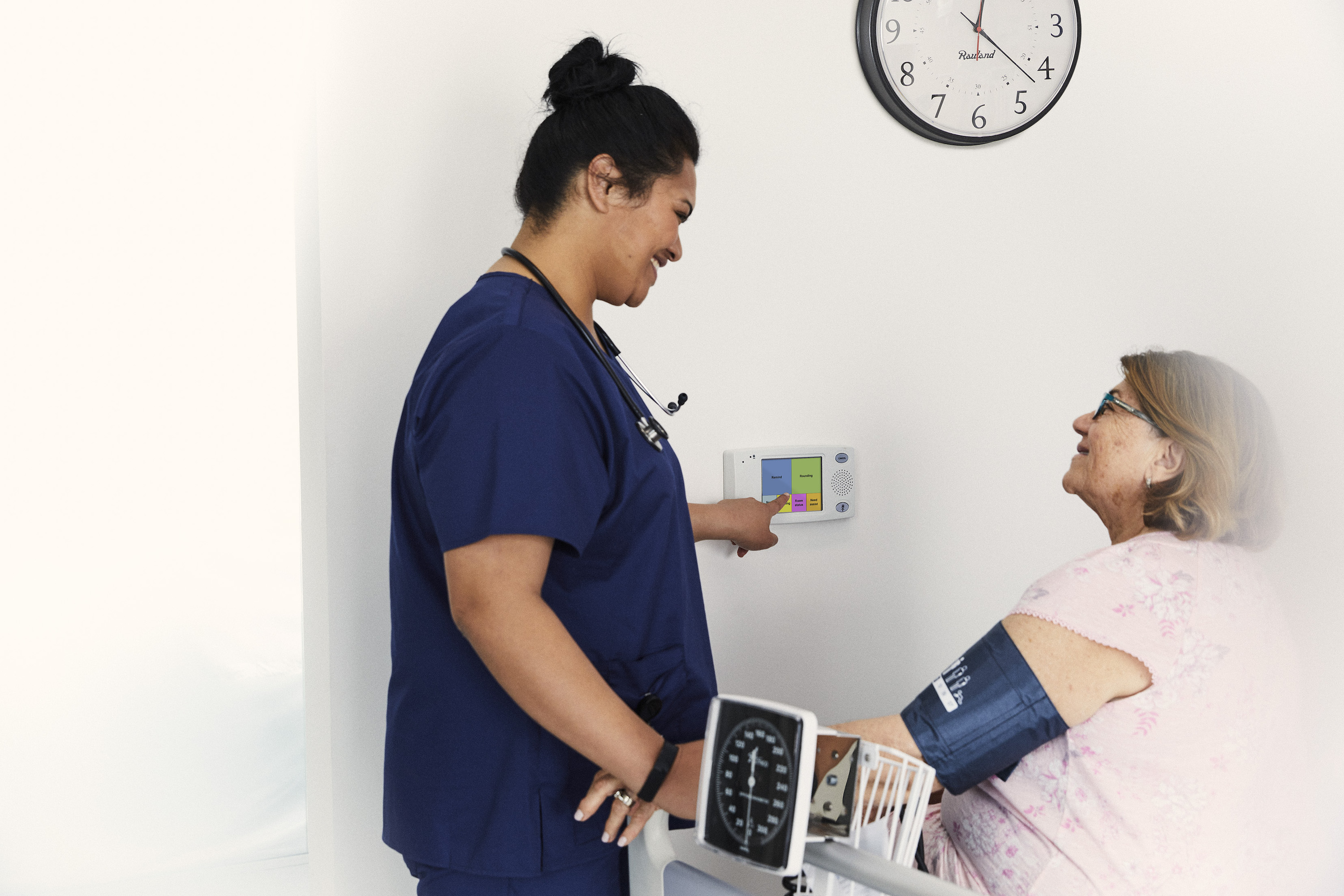CSIRO researchers have developed a blueprint showing how to enhance the implementation of a digital falls prevention platform for inpatient care, using the example of the new Maitland Hospital near Newcastle in NSW.
The study looked at the roll-out of Rauland Australia’s Concentric Care fall prevention platform at the 300-bed Maitland Hospital, studying four inpatient wards in the newly rebuilt referral facility.
The study’s lead author, Alana Delaforce from the CSIRO’s Australian eHealth Research Centre, will discuss how to create an implementation enhancement plan for implementing the system at the Nursing and Midwifery Digital Health Conference in Sydney in July, one of the pre-conference events being staged with MedInfo23.
Rauland’s Concentric Care platform and falls prevention framework includes a speech-enabled nurse call communication system with Wi-Fi enabled clinical mobile devices carried by nurses so patients can buzz them.
It also features a location services engine and digital dashboards, nurse call buttons on bedside handsets with two-way communication capability, audio/microphone stations in bathrooms, staff station consoles and smart bed integration.
Visual cues include light sensors outside rooms that highlight if a patient is a falls risk, and this and other information then feeds into software that nurse unit managers use to manage workload.
Colleagues from the CSIRO and Maitland Hospital were also involved in the study, reported in the International Journal of Environmental Research and Public Health in February.
While fall prevention interventions such as exercise, medication review, and environmental or assistive technologies including bed or chair alarms exist, this was the first study to consider barriers and enablers using the research approach taken.
The approach used implementation theory to develop an implementation enhancement plan to improve uptake of the fall prevention workflow.
Dr Delaforce, senior implementation scientist at the AeHRC, said the key message was that patient and staff involvement was important in implementing and adapting the platform to suit their own health service needs.
“Our paper doesn’t say if the falls platform intervention works, but it’s a prelude by identifying barriers and enablers to it in a workable plan and reporting this information back to the hospital so staff can decide what they can do in their context,” Dr Delaforce told Pulse+IT.
“Results provide a blueprint to enhance implementation that will be tested for effectiveness at a later stage.”
Mapping process revealed interventions
Researchers interviewed 12 nurses and coded interviews to the consolidated framework for implementation research (CFIR), converting findings to ‘barrier’ and ‘enabler’ statements. Barriers and enablers were mapped to the expert recommendations for implementing change (ERIC) tool to develop an implementation enhancement plan.
The researchers concluded the CFIR-ERIC approach provided clear recommendations to enhance implementation and would likely improve uptake and engagement with the Rauland platform and other similar workflow technologies.
The research showed that staff generally saw the benefit of the platform but reported it was sometimes hard to obtain a bed equipped with the technology. This was consistent with previous research noting insufficient resources were a key barrier to using hospital-based interventions, making additional resources worthy of consideration to enhance provision of fall prevention beds.
Compatibility was reported as an issue where staff felt that they needed to develop new workflows to adapt to the new technology and falls platform.
“This is consistent with previous research findings that when workflows are not sufficiently developed and communicated to staff, particularly in the context of digital health interventions, their uptake and use can be impeded,” the researchers wrote.
The ERIC tool suggested promoting adaptability to enhance uptake and one way was to perform a clinical workflow analysis to support implementation of eHealth interventions.
“Facilities intending to implement the Concentric Care fall prevention platform should undertake this mapping exercise beforehand and ensure all staff are trained to see how they need to adapt their work practices,” they said.
Dr Delaforce said nurses could access the free ERIC tool at cfirguide.org to develop an implementation enhancement plan.
The Nursing and Midwifery Digital Health Conference is being hosted by the Australasian Institute of Digital Health’s Nursing Midwifery Digital Health Network, having evolved from the annual Nursing Informatics Australia conference.
Pulse+IT is a conference media partner for MedInfo23.




